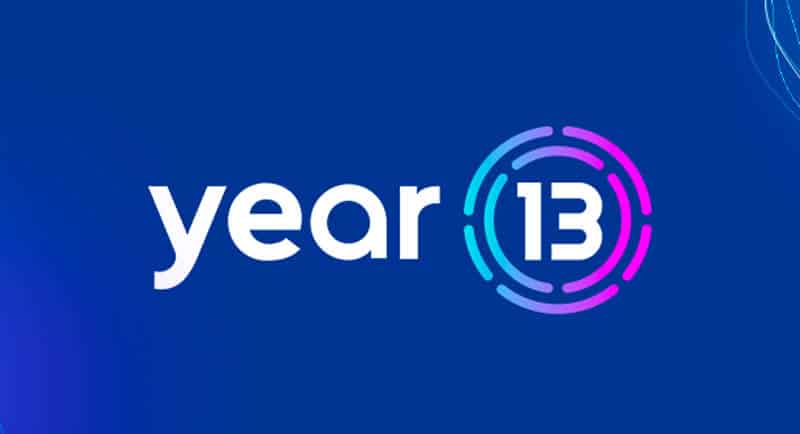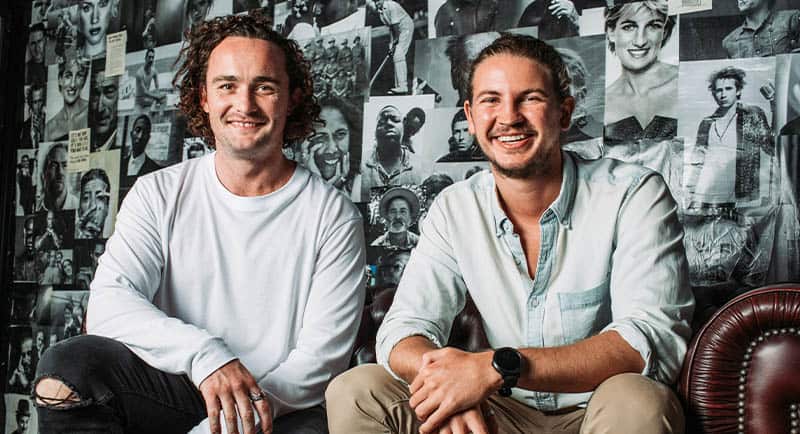If you were to put together a list of demographics that are notoriously difficult to reach, Gen Z would likely be at the top. As a demographic, they can spot inauthenticity from a mile away, and – contrary to popular belief – getting their attention requires way more than knowing the latest TikTok dance.
Enter Year13. The platform works with people towards the end of their schooling years, and through their entry into the workforce. Year13 reaches 1.6 million users online each year, and double that every month on socials.
Mediaweek spoke to Year13 founders Will Stubley and Saxon Phipps about connecting with Gen Z and what the platform can do for brands.
Year13 was founded on the desire to “upgrade” the school-to-work transition. It’s a pivotal time in anybody’s life, however it’s not always as easy and carefree as people expect.
Sadly, the founders of Year13 know this all too well.
Stubley: “There are a whole bunch of difficulties with that process. For us, there was some personal stuff where for a couple of our friends, it was getting too much and they took their own life. When you finish school, it’s meant to be this big celebration and be the best period of your life, but unfortunately that isn’t the case for a lot of young people.”
There are two sides to the Year13 business. The first is focused on helping young people find meaningful work, and the other is around well being and making sure that they’re supported throughout that journey.
Stubley: “From a support point of view, there are all these firsts that happen, which they’re really unprepared for. There’s the first time getting a car, first time getting a bank account, for some they’re going travelling for the first time. The brand persona is that cool older brother or sister that’s been there, done that and can help advise and make those decisions not as scary.”
Despite the youth of the business, the numbers behind Year13 are reflective of how well it knows its target demographic. Over 1,100 high schools use thier software, there are 1.6 million users on the platform, and they have a reach of over 3.5 million on socials.
Stubley: “We have around 60%, market penetration in terms of Gen Z. That’s the difference, we really just focus on Gen Z. There are about four and a half million Gen Z young people in Australia – we’ve got about a third of that on platform, and we reach over 85% of that through our socials.”
Phipps: “Whilst Will and I are categorised as millennials, just about all of our content and social team are Gen Z. We know the world of work and the transition from school into that next phase has changed dramatically for us millennials, but for Gen Z it’s a completely different kettle of fish.”
See Also: Year13 and Digital Skills Organisation partner to grow tech sector workforce

When creating such specifically targeted content, the pair say that there are a handful of things they always keep top of mind.
Phipps: “An interesting bit of research that we did recently was around the psychographics of Gen Z, and showed that Gen Z care more about sustainable, environmental, and social impact than they do about news, pop culture, and consumerism. This shift in mentality is actually really starting to redefine the way brands, businesses, educators, and government are curating their messages to young people.
“Our mission is to empower young people to make better decisions. By listening to those core problems that our audience is experiencing, it means that we are continually able to answer those problems, but also connect in a really authentic and genuine manner.”
Research is a major strength of Year13, having surveyed 48,000 young people in the last 6 years. All up, the team have 50 million data points on youth perceptions, intentions, preferences, and passions – which is good news for brands.
Stubley: “We did a report about Gen Z’s spending behaviours and how they’re actually aligned to brands. The summary is that not only that brands aligning to those core messages with Gen Z good for the planet, but it’s actually good for business as well. They’re saying that they would rather spend with Levi’s, for example, knowing that it’s sustainable, not fast fashion.”
The team works with about 150 different pathway and brand organisations, including Levi’s, Red Rooster, Westpac, and Aware Super.
Phipps: “We’ve been able to build support pillars for Gen Z, so that they are more aware or accustomed to different brands and different activations. It ranges from a promotion with Red Rooster for P platers to digital tools from Microsoft, and then there’s the training and employment opportunities for the likes of Atlassian.”
As for what Year13 can offer brands, the pair say that one of the core things is authenticity.
Stubley: “We see a gap in the market, and the reason we’re launching into media is that authentic connection with Gen Z.
“We’ve seen it through the campaigns that we’ve done by engaging with young people around topics that they care about, and aligning that to our brand message. We do surveys pre and post with our partnerships, and it measurably increases – both from a brand perspective, but also from an intent perspective of both the product and the brand. I just see such a big opportunity to get away from the automated banner ads and actually have meaningful conversations with this audience.”
Help is available: Lifeline is available 24/7 on 13 11 14
–
Top Image: Phipps and Stubley
